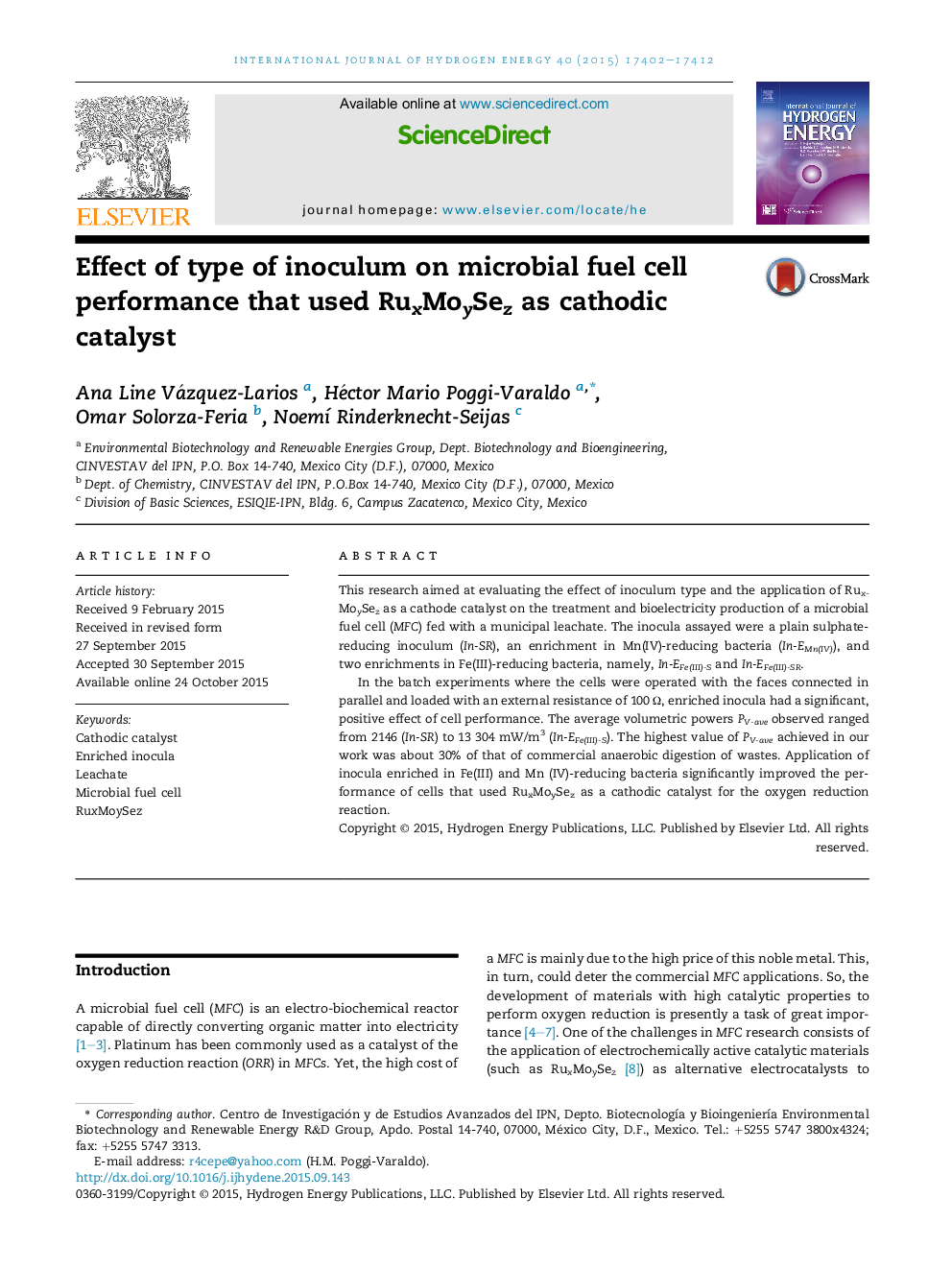| Article ID | Journal | Published Year | Pages | File Type |
|---|---|---|---|---|
| 1269031 | International Journal of Hydrogen Energy | 2015 | 11 Pages |
•We evaluated the effect of inoculum on performance of MFCs.•The MFCs used RuxMoySez as a cathode catalyst.•The MFCs were fed a recalcitrant municipal leachate and seeded with four inocula.•The highest PV-ave was achieved with inoculum enriched with Fe(III).•This PV-ave was 30% of the power delivered by anaerobic digestion of wastes.
This research aimed at evaluating the effect of inoculum type and the application of RuxMoySez as a cathode catalyst on the treatment and bioelectricity production of a microbial fuel cell (MFC) fed with a municipal leachate. The inocula assayed were a plain sulphate-reducing inoculum (In-SR), an enrichment in Mn(IV)-reducing bacteria (In-EMn(IV)), and two enrichments in Fe(III)-reducing bacteria, namely, In-EFe(III)-S and In-EFe(III)-SR.In the batch experiments where the cells were operated with the faces connected in parallel and loaded with an external resistance of 100 Ω, enriched inocula had a significant, positive effect of cell performance. The average volumetric powers PV-ave observed ranged from 2146 (In-SR) to 13 304 mW/m3 (In-EFe(III)-S). The highest value of PV-ave achieved in our work was about 30% of that of commercial anaerobic digestion of wastes. Application of inocula enriched in Fe(III) and Mn (IV)-reducing bacteria significantly improved the performance of cells that used RuxMoySez as a cathodic catalyst for the oxygen reduction reaction.
